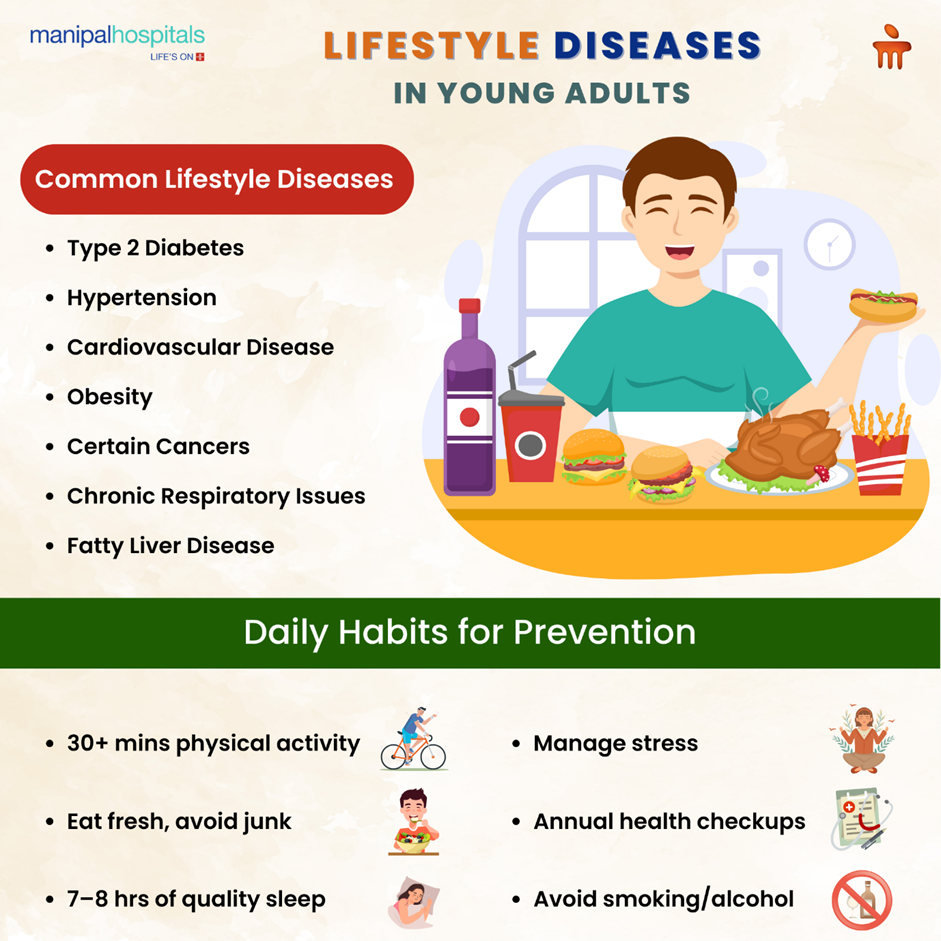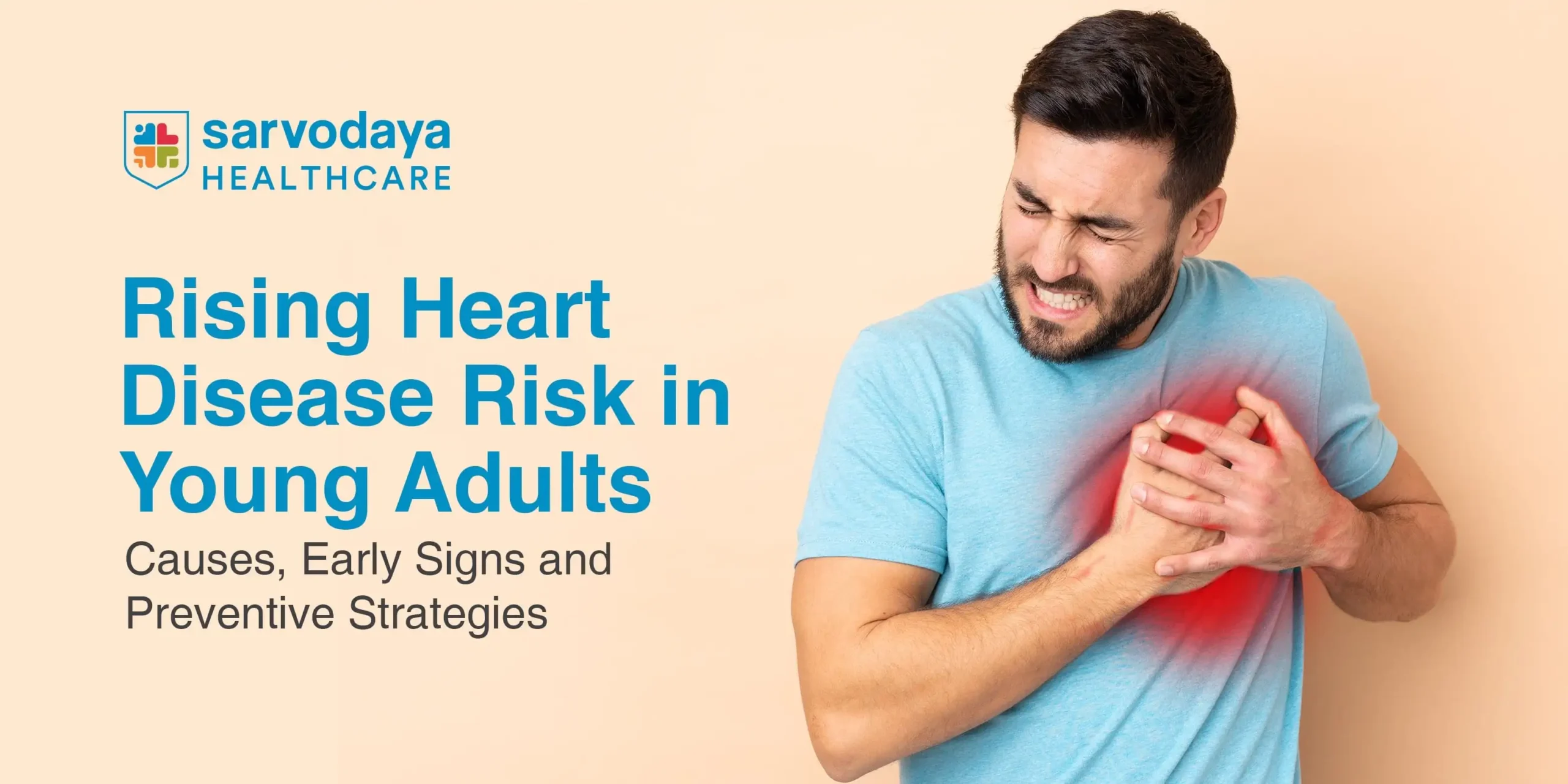Lifestyle diseases—non-communicable conditions linked to daily habits—are the leading cause of death and disability worldwide. In the U.S., chronic diseases such as heart disease, diabetes, obesity, and hypertension affect over 194 million adults, with 51.4% experiencing multiple chronic conditions. These diseases are largely preventable through changes in diet, physical activity, and stress management.
Introduction: The Growing Burden of Lifestyle Diseases
In the 21st century, lifestyle diseases have emerged as a global health crisis. Unlike infectious diseases, these conditions are primarily influenced by personal choices and environmental factors. The World Health Organization (WHO) identifies cardiovascular diseases, cancers, chronic respiratory diseases, and diabetes as the leading causes of death and disability worldwide.
In the United States, the prevalence of chronic diseases is alarmingly high. According to the Centers for Disease Control and Prevention (CDC), approximately 76.4% of U.S. adults reported having at least one chronic condition in 2023. CDC Furthermore, 51.4% of adults experienced multiple chronic conditions, highlighting the escalating burden on individuals and the healthcare system.
What Are Lifestyle Diseases?
Lifestyle diseases are non-communicable diseases that are primarily caused by unhealthy behaviors and environmental factors. These include:
- Cardiovascular Diseases (CVDs): Conditions affecting the heart and blood vessels, such as heart disease and stroke.
- Type 2 Diabetes: A chronic condition affecting the way the body processes blood sugar (glucose).
- Obesity: Excessive fat accumulation that presents a risk to health.
- Hypertension: High blood pressure, which can lead to heart disease and stroke.
- Certain Cancers: Particularly those influenced by lifestyle factors, such as lung, colon, and breast cancer.
- Chronic Respiratory Diseases: Including chronic obstructive pulmonary disease (COPD) and asthma.
- Mental Health Disorders: Conditions like depression and anxiety, often linked to lifestyle factors.
The Most Common Lifestyle Diseases Today
1. Cardiovascular Diseases (CVDs)
CVDs remain the leading cause of death globally. In the United States, heart disease accounted for 928,741 deaths in 2020. Risk factors include poor diet, physical inactivity, smoking, and excessive alcohol consumption.
Real-Life Example:
John, a 55-year-old man with a sedentary lifestyle and poor dietary habits, suffered a heart attack. His doctors attributed it to his high cholesterol levels and lack of physical activity. With lifestyle modifications, including regular exercise and a heart-healthy diet, he significantly improved his cardiovascular health.
2. Type 2 Diabetes
Type 2 diabetes is a chronic condition that affects the way the body processes blood sugar. The International Diabetes Federation reports that nearly 589 million adults globally are living with diabetes, a number expected to rise to 853 million by 2050. The Times of India Risk factors include obesity, physical inactivity, and poor diet.
Real-Life Example:
Sarah, a 40-year-old woman, was diagnosed with prediabetes. By adopting a healthier diet, increasing her physical activity, and losing weight, she was able to prevent the progression to type 2 diabetes.
3. Obesity
Obesity is a significant risk factor for many lifestyle diseases, including heart disease, diabetes, and certain cancers. In the United States, 42% of adults were classified as obese in 2022. Health System Tracker Contributing factors include poor diet, lack of physical activity, and genetic predisposition.
Real-Life Example:
Michael, a 30-year-old man, struggled with obesity for years. After undergoing bariatric surgery and committing to lifestyle changes, he lost a significant amount of weight and improved his overall health. The Times of India
4. Hypertension
Hypertension, or high blood pressure, is a major risk factor for heart disease and stroke. Approximately 32% of U.S. adults had hypertension in 2019. Health System Tracker Lifestyle factors such as excessive salt intake, physical inactivity, and obesity contribute to its prevalence.
Real-Life Example:
Linda, a 50-year-old woman, was diagnosed with hypertension. Through dietary changes, regular exercise, and stress management techniques, she successfully lowered her blood pressure without medication.
5. Certain Cancers
Lifestyle factors such as diet, physical activity, and tobacco use are linked to the development of certain cancers, including lung, colon, and breast cancer. The American Cancer Society notes that approximately one-third of cancer deaths in the United States are related to obesity, physical inactivity, and poor nutrition.
Real-Life Example:
Tom, a 60-year-old man, was diagnosed with colon cancer. His doctors believe his poor diet and lack of physical activity contributed to the development of the disease. After treatment, he adopted a healthier lifestyle to reduce the risk of recurrence.
6. Chronic Respiratory Diseases
Chronic respiratory diseases, such as chronic obstructive pulmonary disease (COPD) and asthma, are influenced by lifestyle factors like smoking and exposure to environmental pollutants. The WHO reports that these diseases are among the leading causes of death globally.
Real-Life Example:
Emily, a 45-year-old woman, developed COPD due to years of smoking. After quitting smoking and engaging in pulmonary rehabilitation, she improved her lung function and quality of life.
7. Mental Health Disorders
Mental health disorders, including depression and anxiety, are increasingly recognized as lifestyle diseases. Factors such as chronic stress, lack of physical activity, and poor nutrition contribute to their prevalence. The WHO emphasizes the importance of addressing lifestyle factors in the prevention and management of mental health conditions. World Health Organization
Real-Life Example:
James, a 35-year-old man, experienced severe anxiety and depression. Through therapy, regular exercise, and dietary changes, he significantly improved his mental health and overall well-being.
Prevention and Management Strategies
1. Healthy Eating
Adopting a balanced diet rich in fruits, vegetables, whole grains, and lean proteins can help prevent and manage lifestyle diseases. Limiting the intake of processed foods, sugary beverages, and excessive salt is also crucial.
2. Regular Physical Activity
Engaging in regular physical activity, such as walking, cycling, or swimming, can reduce the risk of developing chronic diseases and improve overall health. The CDC recommends at least 150 minutes of moderate-intensity aerobic activity per week.
3. Stress Management
Chronic stress is a significant risk factor for many lifestyle diseases. Practicing stress-reducing techniques such as meditation, yoga, and deep breathing exercises can improve mental and physical health.
4. Adequate Sleep
Getting sufficient sleep is essential for overall health. Adults should aim for 7-9 hours of sleep per night to support immune function, mood regulation, and metabolic health.
5. Regular Health Screenings
Regular health check-ups can help detect early signs of lifestyle diseases, allowing for timely intervention and management. Screenings for blood pressure, cholesterol levels, blood sugar, and body mass index are recommended.
FAQs
1. What are the leading causes of lifestyle diseases?
The leading causes include poor diet, lack of physical activity, smoking, excessive alcohol consumption, and chronic stress.
2. Can lifestyle diseases be reversed?
Many lifestyle diseases can be managed or reversed through significant lifestyle changes, including adopting a healthy diet, increasing physical activity, and quitting smoking.
3. How can I reduce my risk of developing lifestyle diseases?
Maintaining a healthy weight, eating a balanced diet, exercising regularly, managing stress, and avoiding tobacco and excessive alcohol use can significantly reduce the risk.
4. Are children at risk for lifestyle diseases?
Yes, children can develop lifestyle diseases, particularly if they have poor dietary habits, lack of physical activity, and exposure to




